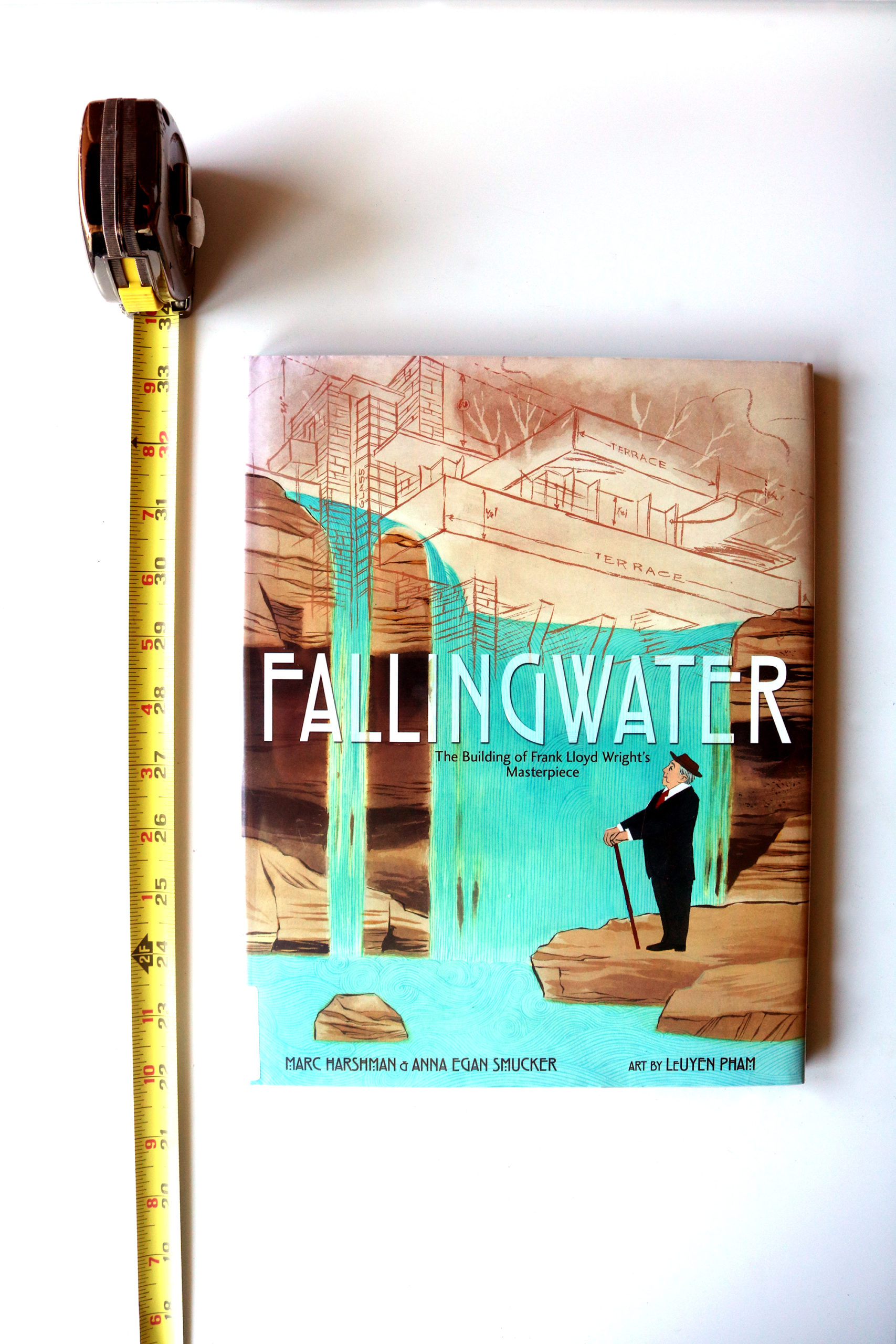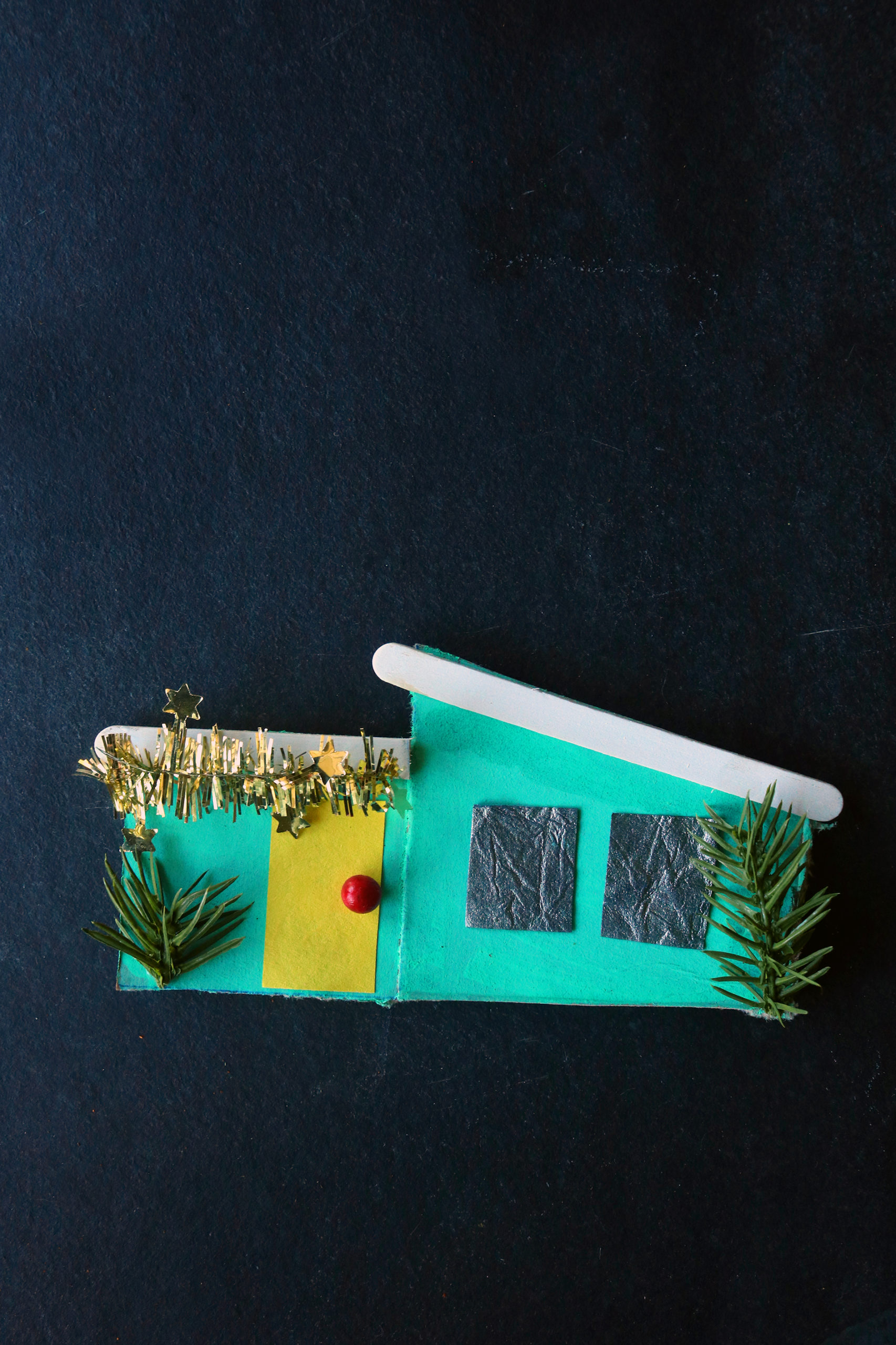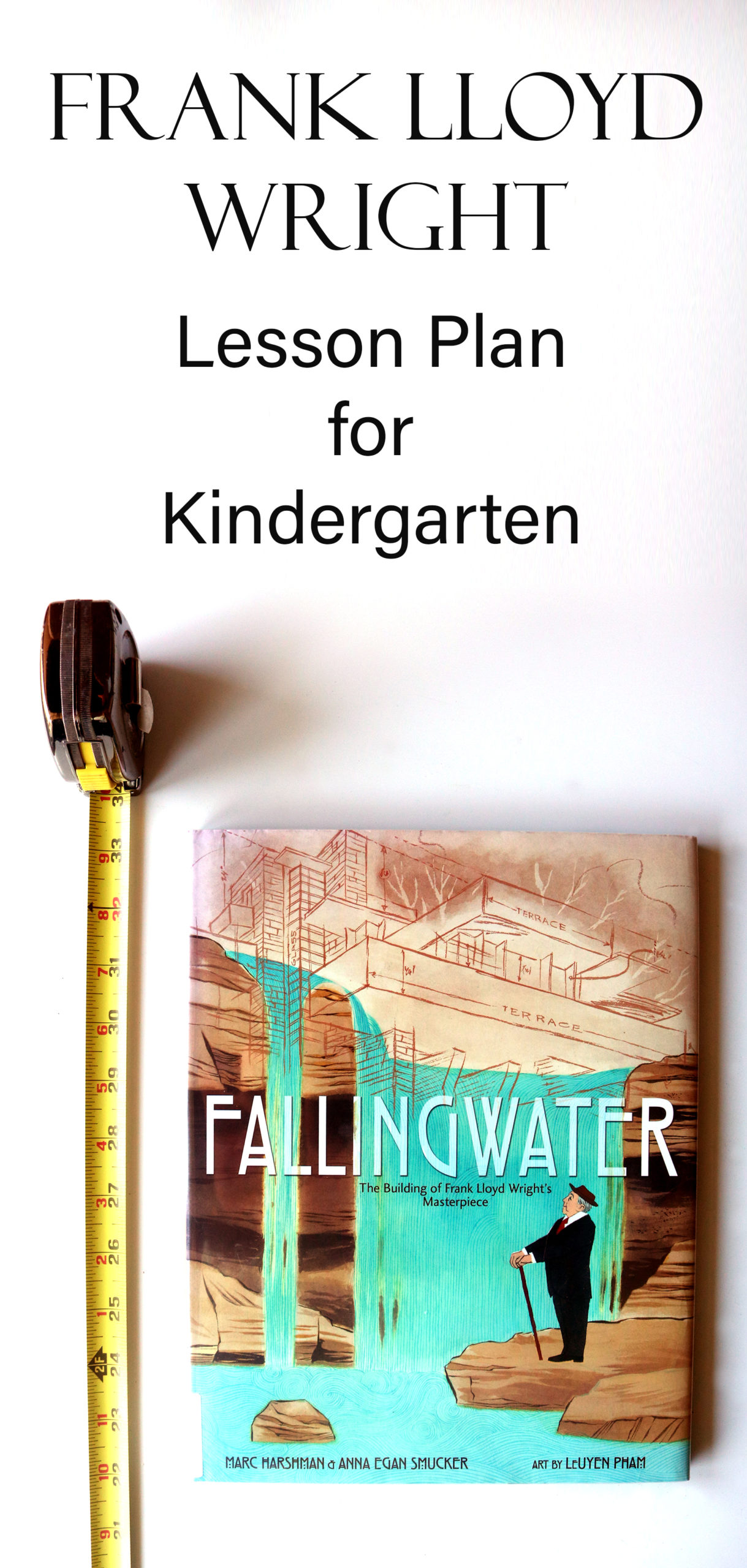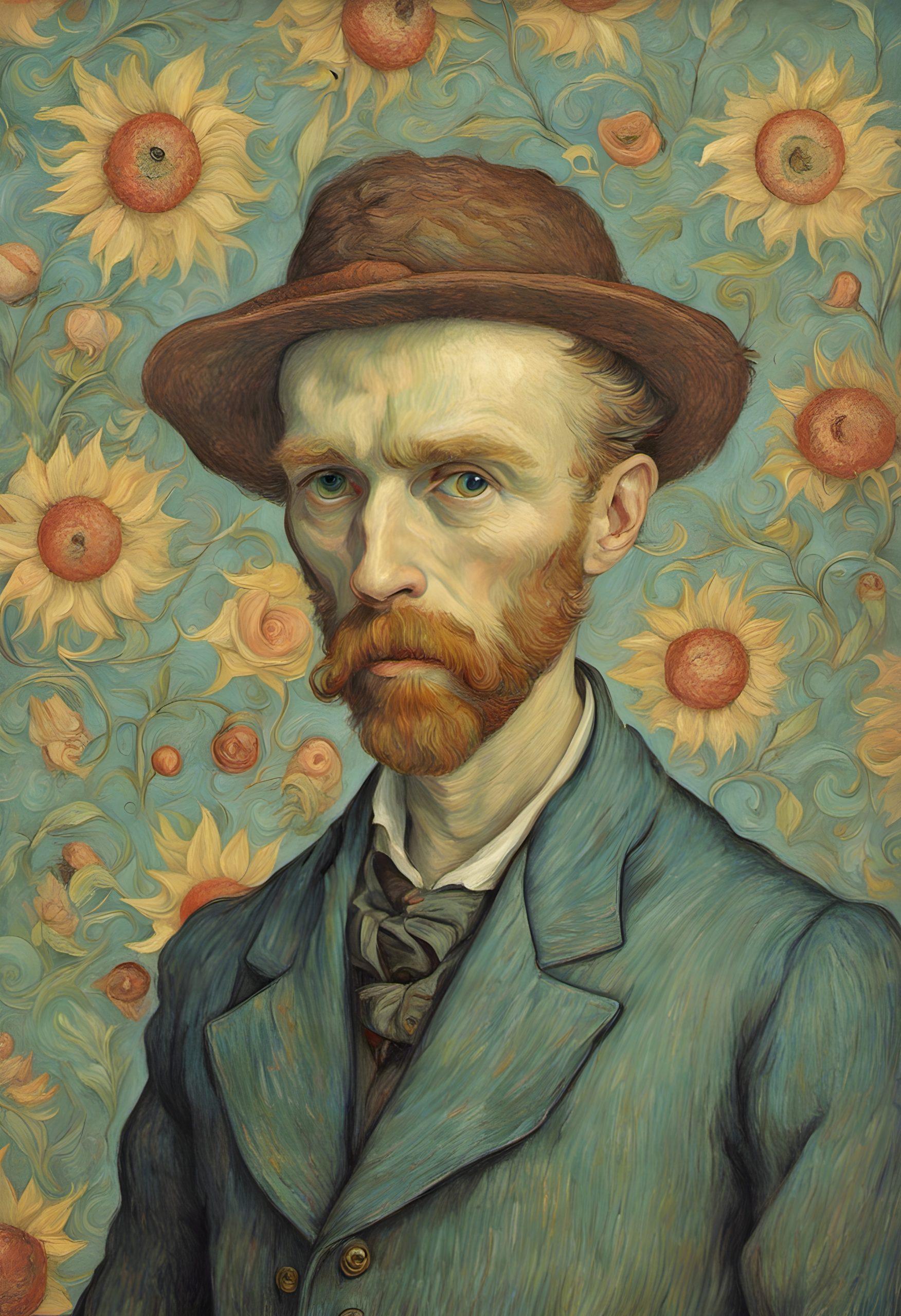Frank Lloyd Wright built houses made of dreams. Introduce elementary-aged students to the wonder and spectacular imagination of the most famous American architect in the world.
Who was Frank Lloyd Wright?
Most famous for his masterful and innovative design of Falling Water, Frank Lloyd Wright created structures around a design philosophy he termed organic architecture.
In a nutshell, Wright idealized architecture that coexisted with nature.
How ahead of his time!
Born in the late 19th century, Wright already recognized living in harmony with nature as a high art form.
And made a lot of this art! Wright designed over 1,000 creative structures in his lifetime.
Critics credit many influences to Wright’s work. But perhaps most obviously, Wright’s time in Japan profoundly influenced his designs.
Clean lines and natural elements gave his architecture a holistic feel.
Suggested Reading

For this lesson, we began by introducing the artist with (affiliate link —->) Falling Water: The Building of Frank Lloyd Wright’s Masterpiece by Marc Harshman.
Told in story format with high-quality illustrations, this book covers the trials and triumphs of Wright’s journey in creating his masterpiece, Falling Water.
Function vs. Form
Any lesson on architecture offers an opportunity to discuss the crux of applied art—-function and form.
Take a close look at Falling Water. Ask the kids:
-Which elements are primarily functional? Are windows functional? What about shutters and shingles? How about a pool, or access to a waterfall?
-Which elements are aesthetic? Is a stained glass window that blocks shades the sunlight functional or aesthetic? Is mosaic tile more pleasing than carpet? Which would you rather have under your feet in the winter?
-Can elements be both functional and aesthetic, or must one always suffer the other?
Take the tour.
Can’t make it to Pittsburgh for an in-person experience?
The Falling Water website offers beautiful footage and virtual tours of Wright’s most famous creation.
Take a look inside his masterpiece with their visually-stunning content.
Key Terms & Vocabulary
Aesthetic: Concerned with beauty or the appreciation of beauty.
Clean lines: Simple, uncluttered design characterized by straight, clear lines.
Design philosophy: A guiding principle or set of principles underlying the creation of designs.
Functional: Designed to be practical and useful, serving its intended purpose effectively.
Holistic: Considering the whole rather than just individual parts, emphasizing interconnectedness and integration.
Mid-century modern: Design style popular from the mid-20th century, characterized by clean lines, organic forms, and functionality.
Organic architecture: Architectural approach emphasizing harmony with natural surroundings and integration of natural forms into design.
The Project: Design Your Own House!
This project is totally customizable according to what you have on hand.
I love it because the kids can design their own house any way they want to. You can provide templates for the house shape, or just them work from their imaginations.
I did this for our homeschool co-op and the kids loved it. We used Wright as a jumping-off point for a larger discussion about the art, styles, and uses of architecture.
Of course, in a group setting, projects succeed, and sometimes, they flop.
But this one was a hit!
This is a scrappy, customizable project that offers kids a lot of flexibility in creating their own designs.
I started by covering a few basic home designs they probably knew from living in the United States–colonial, Victorian, mid-century modern, adobe, etc.
Once they picked a style they liked, I showed them how to cut out the basic shapes of the house.
Then, they chose a paint color. I made this a 2-session project to allow for drying.
Once dried, I laid out a bunch of odds and ends from my craft closet—old Christmas decorations, beads, popsicle sticks to make the trim, and so on.

Materials
-cardstock or scrap cardboard
-paint
-glue
-odds and ends
Step 1
Trace and cut out the basic shape of the house.
Step 2
Paint the house any way you like.
Step 3
This is the fun part! Decorate the house with random odds and ends. We used scrap fake florals to make bushes in the front, beads for doorknobs, tin foil windows, ect. Have fun and use your imagination!



